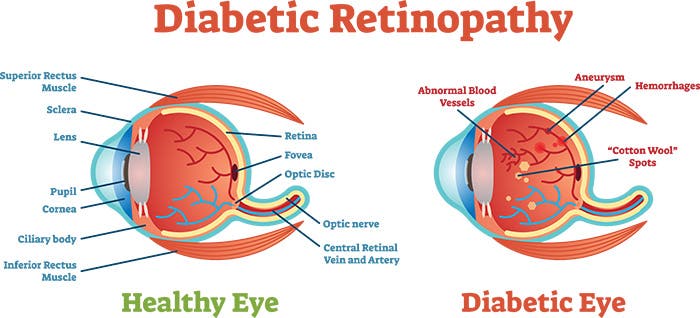Artificial Intelligence, or AI, has been used in various industrial and commercial sectors with stunning success. AI is particularly promising in the field of healthcare, from machines that diagnose cancer better than a doctor to new drug discovery thanks to ungodly fast protein folding. Now, it’s time for this technology to make its way into eye care to quickly diagnose retinal disease on a global scale. Some companies are using this innovative technology to detect and quickly diagnose retinal diseases on a global scale.
Millions of people across the world are at risk of preventable blindness

According to the WHO (World Health Organization), over 400 million people are suffering from some variant of retinal disease. This includes age-related macular degeneration (AMD), diabetic retinopathy, and glaucoma. This number is expected to increase by at least another 25%. The good news is that 80% of these vision problems can be cured or prevented — and AI is expected to be part of the solution.
Many research groups and eye care organizations are lending a helping hand to reduce the incidence of retinal disease, from a French company that is dedicated to developing effective diagnostics for retinal pathologies to technologist and investor Tej Kohli who runs a corneal institution to help provide solutions to treating and repairing corneal eye disease and blindness.
Some of these proposed AI-based technologies can help make the diagnosis of retinal disease more visible and fully autonomous, thus helping to reduce blindness throughout the world by allowing patients to start treatment early. Take for instance “diabetic retinopathy”, which is a consequence of diabetes and a leading cause of blindness.
Diabetic eye disease currently affects many of the 146 million diabetics around the world and the number of patients is increasing every year. The current shortage of eye-care providers would make it impossible to keep up with demand to provide the requisite annual screenings for this population.
Symptoms include light sensitivity which affects the retina, eventually causing blindness if not treated. But with the help of AI technologies, it can be detected in its early stages and help prevent the person from going blind.
Dr. AI
Specialists often require intensive training and specialized equipment to be able to tackle eye and vision problems. But AI may be able to fill in the gaps of the lack of specialized ophthalmologists.
In the future, patients may be able to upload a high-resolution picture of their eye through an app, where machine learning algorithms look for telltale signs of diabetic retinopathy. Such a solution would be particularly useful for those living in low- and middle-income countries where access to a physician is limited or non-existent.
A concrete example of such an innovative AI system that has hit the market is “IDx-DR”, which has been approved by the US Food and Drug Administration (FDA). It’s a system that can tell within minutes if a person has more than a mild case of diabetic retinopathy. In clinical trials, IDx-DR demonstrated 87% sensitivity and 90% specificity at detecting more than mild diabetic retinopathy, which is on par or even better in some cases with a human doctor. The University of Iowa Health Care became the first organization to implement IDx-DR in the clinic.
Similarly, the EyeArt AI Eye Screening System (Eyenuk) system screens for diabetic retinopathy in images of the eye fed into the system. However, these aren’t any images. Both IDx-DR and Eyenuk work using images of the retina taken with a fundus camera, a microscope with an attached camera that images the rear of the eye. The EyeArt AI System has the CE Mark as a class 2a medical device in the European Union and a Health Canada license. In the United States, the system has received FDA 510(k) clearance.
Other promising AIs that scan a patient’s retina to look for signs of diabetic retinopathy include IRIS (Intelligent Retinal Imaging Systems), an FDA class 2 retinal diagnostic solution that integrates into clinical primary care workflows, and Google’s DeepMind. The latter uses one algorithm to detect disease features in an image of a person’s retina. Another algorithm then uses those features to make a decision about whether that person needs to consult an ophthalmologist and, if so, how urgently.
These technologies are in their infancy so there is still much work before eye care practitioners can defer to AIs. However, if previous results are any indication, millions of people could be saved by preventable vision loss in the not-so-distant future.



